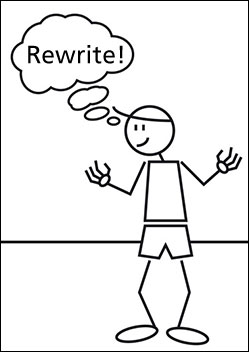 It may come as a shock to those of you who have expressed admiration for my books and writing (thank you!) when I confess that I do not believe I am a good writer. Immersed as I currently am in putting together a first draft of a new book, I am often disheartened by how badly it is going. If I were a painter, or illustrator, I might say I was creating nothing but stick figures. Rather uninteresting ones at that.
It may come as a shock to those of you who have expressed admiration for my books and writing (thank you!) when I confess that I do not believe I am a good writer. Immersed as I currently am in putting together a first draft of a new book, I am often disheartened by how badly it is going. If I were a painter, or illustrator, I might say I was creating nothing but stick figures. Rather uninteresting ones at that.
Right next to my computer desk are three long shelves of books that I have written—first editions, hardback, paperback, foreign editions—some with awards—and I will gaze at them and wonder, “How did I do that?”
The answer is, while I truly don’t write well—I do rewrite well. That is the way my books come to life, in my head and on the page. And, as I have expressed here many times before, I rewrite endlessly. That is when my stick figures take on heft, and voice, and hopefully, life.
One of the key aspects of that rewriting, is trying to establish flow, rhythm, drive—call it what you will—a sense of energy that moves the story along with seemingly truthful simplicity, a sense of revelation, rather than construction. I say truthful in the context of an old gag: “The most important thing about writing is honesty. If you can fake that, you’ve got it made.”
That notion can apply to many an art form—indeed, I heard it first in my theatre days—but there is some aesthetic truth to it, cynical though it may sound. I could better express it in words I once heard Paula Fox say, “The writer’s job is to imagine the truth.”
But enough of this. I need to get back to that first draft.